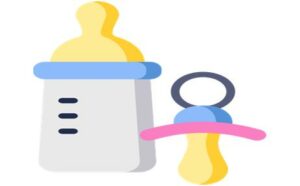As a parent, one of your primary responsibilities is to ensure that your baby receives proper nutrition for healthy growth and development. When breastfeeding is not an option or is supplemented with formula feeding, understanding the amount and schedule of baby formula feedings becomes crucial.

Consultation with Pediatrician
Before establishing a feeding schedule, it is important to consult with your pediatrician. They can provide personalized guidance based on your baby’s age, weight, health, and other specific considerations. Your pediatrician will help you determine the right formula, suggest suitable feeding amounts, and advise you on any potential modifications.

Establishing the Right Amount:
The amount of baby formula your baby needs will vary depending on their age, weight, and individual requirements. In general, newborns will consume smaller amounts per feeding but will require more frequent feedings. As your baby grows, their appetite will increase, and the amount per feeding will gradually increase while the frequency decreases.

Newborns (0-3 Months)
During the first three months, newborns typically consume around 1.5 to 3 ounces (45-90 ml) of baby formula per feeding. They may feed every 2-3 hours, totaling 8-12 feedings in a 24-hour period. It’s important to remember that babies have different feeding patterns, and some may require smaller, more frequent feedings, while others may consume larger amounts less frequently.

Infants (3-6 Months)
Between 3 and 6 months, babies tend to consume larger amounts of baby formula, usually around 4-6 ounces (120-180 ml) per feeding. They may have around 4-6 feedings per day, with longer intervals between each feeding. By this stage, babies might start showing signs of readiness for solid foods, but formula or breast milk should remain the primary source of nutrition until recommended by your pediatrician.
Older Babies (6+ Months)
Once your baby reaches 6 months and starts introducing solid foods, their baby formula intake may gradually decrease. They will continue to consume around 4-6 ounces (120-180 ml) of formula per feeding, but the number of feedings might decrease to 3-5 per day. The introduction of solid foods complements their nutritional intake and provides a new range of flavors and textures.
| Age Range | Recommended Milk Intake (in ounces) |
| Newborn | 1-2 ounces per feeding (8-12 feedings per day) |
| 1-2 months | 2-4 ounces per feeding (6-8 feedings per day) |
| 3-4 months | 4-6 ounces per feeding (5-6 feedings per day) |
| 5-6 months | 6-8 ounces per feeding (4-5 feedings per day) |
| 7-9 months | 6-8 ounces per feeding (3-4 feedings per day) |
| 10-12 months | 8-10 ounces per feeding (3 feedings per day) |
Listening to Your Baby’s Hunger Cues
While guidelines regarding formula amounts and schedules are useful, it’s essential to pay attention to your baby’s hunger cues. Your baby may show signs of hunger by:
- Smacking their lips
- Sucking on their fists
- Displaying restlessness
- Crying
Similarly, they may display signs of being full by turning their heads away, closing their mouths, or becoming easily distracted. Tuning in to these cues helps you respond to your baby’s needs more effectively.
Nighttime Feedings
Nighttime feedings are common, especially in the early months. Babies may wake up hungry during the night, and it’s important to meet their nutritional needs. While you might be tempted to encourage longer periods of sleep, it is generally recommended to respond to your baby’s hunger cues and offer them feeding when needed. As your baby grows, it will gradually require fewer nighttime feedings.
Conclusion
Establishing a proper amount and schedule of baby formula feedings is an important aspect of caring for your little one’s nutritional needs. Remember to consult with your pediatrician for personalized advice and guidelines specific to your baby. Trust your instincts and listen to your baby’s cues, as they are the best indicators of hunger and fullness.

